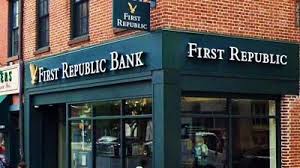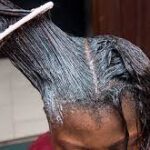In an effort to stop additional banking turbulence in the U.S., regulators seized ailing First Republic Bank early on Monday and sold all of its deposits and the majority of its assets to JPMorgan Chase Bank.
First Republic, situated in San Francisco, is the third midsize bank to fall in the past two months. After Washington Mutual, which failed at the height of the 2008 financial crisis and was also acquired by JPMorgan, it is the second-largest bank failure in American history.
Due to First Republic’s significant quantity of uninsured deposits and exposure to low interest rate loans, investors and depositors have grown more concerned that it may not survive after the March collapses of Silicon Valley Bank and Signature Bank.
The 84 First Republic Bank locations in eight states will reopen as JPMorgan Chase Bank locations on Monday, according to the Federal Deposit Insurance Corporation. Depositors will have complete access to all of their funds.
To find a solution before the opening of the American stock markets, regulators labored all weekend. For the May 1 holidays, markets were closed on Monday in many parts of the world. Tokyo and Sydney, the two open markets in Asia, both increased.
The chairman and CEO of JPMorgan Chase, Jamie Dimon, remarked that “our government invited us and others to step up, and we did.”
According to the FDIC, First Republic has $104 billion in total deposits as of April 13 and roughly $229 billion in total assets.
The Federal Reserve placed it 14th in terms of size among American commercial banks at the end of the previous year. The FDIC predicted that placing First Republic in receivership would cost its deposit insurance fund $13 billion. A record $20 billion was spent by the fund in order to save Silicon Valley Bank.
First Republic possessed a banking franchise that was the envy of the majority of the industry before Silicon Valley Bank went under. Its clientele, who were mainly wealthy and powerful, hardly ever missed their loan payments. The bank has reportedly mentioned Meta Platforms CEO Mark Zuckerberg among those who have benefited from low-interest loans from the bank.
First Republic saw its total assets more than double from $102 billion at the end of the first quarter of 2019, when it had 4,600 full-time employees, thanks to deposits from the wealthy.
However, the vast majority of its deposits were uninsured, which is to say that they exceeded the $250,000 FDIC insurance cap, just like those at Silicon Valley and Signature Bank. Investors and experts were concerned about this. Depositors of First Republic might not get all of their money back if business fails.
Recent quarterly reports from the bank encapsulated these worries. The bank said that during the crisis in April, depositors withdrew more than $100 billion from the bank. First Republic, situated in San Francisco, said that it was only able to stop the bleeding after several big banks intervened to preserve it by providing $30 billion in uninsured deposits.
First Republic has been looking for a strategy to fast recover ever since the catastrophe. The bank had plans to sell off underperforming assets, including the low-interest mortgages it had given to affluent customers. Additionally, it disclosed plans to fire up to 25% of its workforce, which at the end of 2022 numbered around 7,200 people.
Investors continued to be dubious. Since the bank reported its results, the bank’s executives have declined all requests for interviews from analysts or investors, which has caused First Republic’s stock to decline even more.
And when a company must quickly sell off assets and has fewer bankers to find opportunities for the bank to invest in, it is difficult to profitably restructure a balance sheet. After the world financial crisis 15 years ago, it took years for banks like Citigroup and Bank of America to become profitable again, and those banks benefited from a government-sponsored backstop to keep them operating.

















